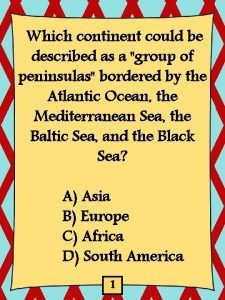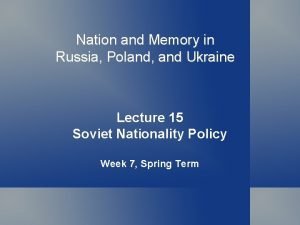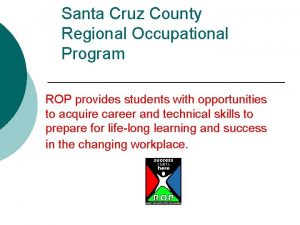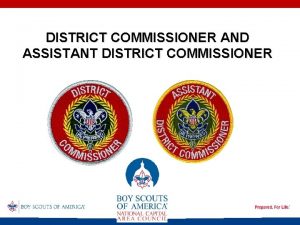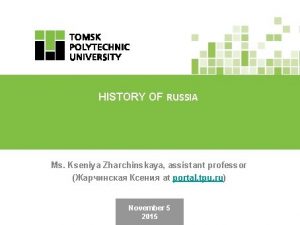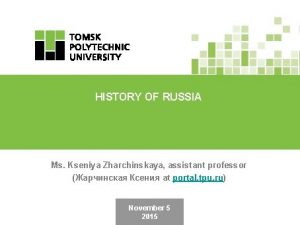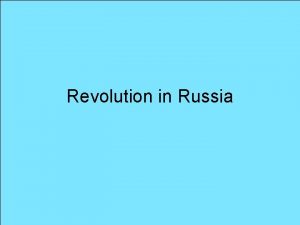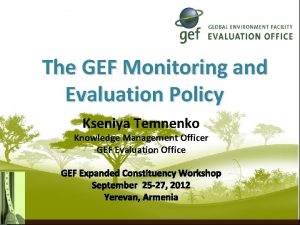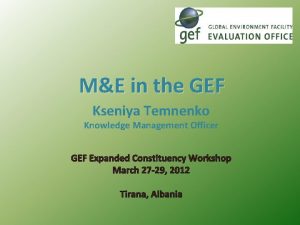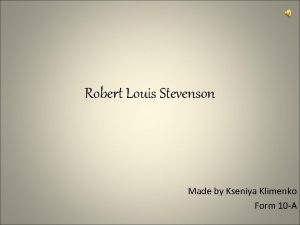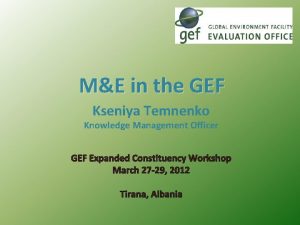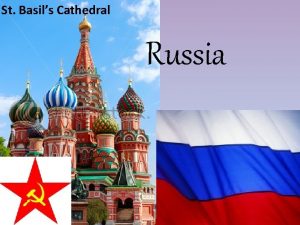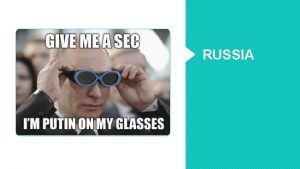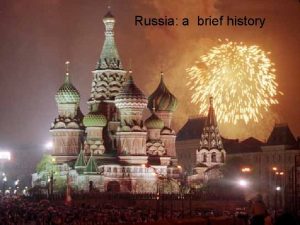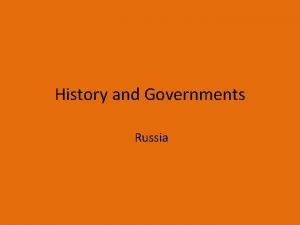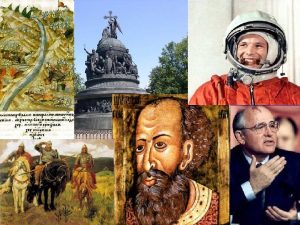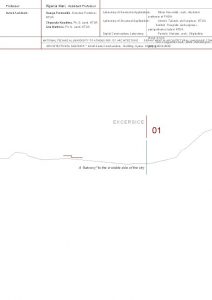HISTORY OF RUSSIA Ms Kseniya Zharchinskaya assistant professor


















![Social structure in Kievan Rus • Prince or Grand prince – Князь [Knyaz] • Social structure in Kievan Rus • Prince or Grand prince – Князь [Knyaz] •](https://slidetodoc.com/presentation_image_h2/b7d4e1c398bcf57c7e264224f697f8e7/image-19.jpg)






- Slides: 25

HISTORY OF RUSSIA Ms. Kseniya Zharchinskaya, assistant professor (Жарчинская Ксения at portal. tpu. ru) November 5 2015

THE NATIONAL RESEARCH TOMSK POLYTECHNICAL UNIVERSITY: HISTORY OF RUSSIA Lecture 1: The rise and decline of Kievan Rus • Society, Religion and the Political system in East Slavic states • The Byzantine Empire influence on Ancient Rus’ • The Mongol invasion • Medieval Rus’ and the Steppe Materials for further reading: 1. 2. 3. 4. 5. Kaiser, Daniel H. , Gary Marker. Reinterpreting Russian History. Oxford, 1994. Martin, Janet. Medieval Russia, 980 -1584. Cambridge, 1995. Riasanovsky, Nicholas and Mark Steinberg. A History of Russia (various editions). Kliuchevskii, V. O. Course in Russian History (various editions). Richard Pipes. Russia under the Old Regime. 1995. 2

PART 1. HISTORICAL NACKGROUND OF EARLY RUSSIAN DEVELOPMENT DISPUTED ISSUES • What is Russian nation? • What is the historical background of Russian Empire? • Russia as the unique juxtaposition of European and Asian traditions. «Умом Россию не понять, Аршином общим не измерить: У ней особенная стать — В Россию можно только верить» . Ф. Тютчев, 1866 г.

Kievan Rus' (Киевская Русь, XIX century term) Рѹ сь (Old East Slavic) Garðar (Old Norse) Steppe – the influence of military, Prince power, territorial expanse Forests – specific agricultural traditions (подсека), predisposition to fragmentation Rivers – foreign relations with Vikings and Byzantium, cities and trade

Ancient Rus’ and The Steppe «Scratch a Russian and find a Tatar» The 8 th century – Khazars The 9 th century – Pechenegs The 10 th century – Bulgaria

There at least 12 Eastern Slavs tribal unions, which were known by the XIth century and mentioned In Old Chronicles • Polans (Поляне) • Drevlyans (Древляне) • Dregovichs (Дреговичи) • Radimichs (Радимичи) • Vyatichs (Вятичи) • Krivichss (Кривичи) • Slovens (Словене) • Volhynians (Волыняне) • White Croats (Белые хорваты) • Severians (Северяне) • Ulichs (Уличи) • Tivertsi (Тиверцы) 75

Primary Chronicle – 1113 Original compilation has not survived Recovered from manuscripts (Laurentian, Hypatian codex) Probably included earlier Slavonic chronicles, the Byzantine annals, Slavonic legends, Norse sagas, Greek religious texts, stories told by military leaders «The Tale of Bygone Years» (Повесть временных лет) A brief chronological history of Kievan Rus' from about 850 to 1110 by monk Nestor



Prince Oleg of Novgorod (882 -912) • Controlled both Novgorod and Kiev (882) • Moved capital to Kiev • Attacked Constantinople (907) In culture • • Poem «The Song of the Wise Oleg» by Alexander Pushkin; Film «A Viking Saga – Son of Thor» (2008, Danish, USA).

Igor of Kiev (912 – 945) • Rus'–Byzantine War (941) • Rus'–Byzantine Treaty (945) • Killed by one of Slavic tribes when collected Tribute (945)

Saint Olga (945 – 963) • First woman on throne in Rurik dynasty • Changed Tribute system after buried Drevlians (first legal reform and first Russian punitive killing of a large group of people > 5000 people according to Nestor) • Adopted christianity (945 or 957) • Launched stone city planning In the monument «Millennium of Russia» in Novgorod

St. Olga meets the Prince Igor body (by Surikov)

Svyatoslav (945 (964) – 972) • The conquest of Khazaria • The invasion of Bulgaria In culture: • Traditionally appreciated by Russian, Belarusian and Ukrainian patriots and nationalists for his invasions; • A main hero of novel «The Lost Kingdom, or the Passing of the Khazars» (by Samuel Gordon).

Rus’ before and after Svyatoslav’s war invasions Monument in Belgorod Region (Russia)

Vladimir the Great (980 – 1015) • Christianized the Kievan Rus’ (988) • Seized new lands (981 - 985) • Suppresed rebellions (981 -982, Vyatichi) • Formed a great council and set his twelve sons over all ancient Russian principalities

Yaroslav the Wise (1019– 1054 ) • Weakened the Byzantine influence on Kiev • Created first Russian written law code ( «Russkaya pravda» ) • Сonstructed a line of forts on the south • Launched the construction of St. Sofia Cathedral in Kiev (1037) • Proclaimed the metropolitan bishop of Kiev (1051)

Russian Justice (Russkaya Pravda) ‘common law’ + prince legislation 1. ‘’ …If a man kills a man: then a brother avenges a brother, or a son avenges a father, or a cousin, or a nephew; if no one will take revenge, then 80 grivnas for the murdered; if he is a knyaz’s man or knyaz official…’’. 9. ‘’If he be a boy, a stableboy, or a cook, then 40 grivnas’’. 10. ‘’And for a horse trainer 80 grivnas’’. 11. ‘’But for a village supervisor 12 grivnas. And for a serf, 5 grivnas. Same for boyar’s’’. 12. ‘’And for a serf, 5 grvinas; for serf woman, 6 grivnas’’.
![Social structure in Kievan Rus Prince or Grand prince Князь Knyaz Social structure in Kievan Rus • Prince or Grand prince – Князь [Knyaz] •](https://slidetodoc.com/presentation_image_h2/b7d4e1c398bcf57c7e264224f697f8e7/image-19.jpg)
Social structure in Kievan Rus • Prince or Grand prince – Князь [Knyaz] • Druzhina (warriors and service aristocracy) – Дружина • Boyars (the service and non-service aristocracy) – Бояре • Ludi and molodshie (младшие) ludi (freemen, urban population and guild members) • Peasants – smerds (the most numerous), zakupy, ryadovichy, cheliad and so on.

Political structure of Ancient Rus’ • • Princely power Council of Prince or boyar council Veche (popular assembly) Prince warriors (druzhina)

Novgorod republic (1136– 1478) Veche of Novgorod – 300 to 500 people, rich boyars (traders, landowners, merchants)


The period of fragmentation (c. XII – XVI) • The rota system – ‘staircase’, a system of collateral throne succession (from brother to brother) = > state defragmentation • Struggle for power between members of princes family => Vladimir Monomakh initiated the ‘Lubech council’ in 1097. ‘Rota system’ changed to autonomous principality based on a direct succession. Vladimir Monomakh, Grand Prine of Rus’ in 1113– 1125

Tatar Yoke (Mongol’s invasion of Rus) • The Golden Horde established in the 13 th century was the northwestern sector of the Mongol Empire ruled by Batu Khan (1207– 1255)

The Mongol influence on Russia • The population of Rus’ had to pay a huge tribute => devastation and delay from Europe • Kiev dominance changed to Moscow ones (Moscow Princes cooperated with Mongols) • Russian Princes borrowed the tradition of "oriental despotism“ • Local administration hierarchy, postal road system, fiscal system, military organization was developed under Mongol invasion.
 Aim of the lesson
Aim of the lesson The geographic feature most responsible for extensive trade
The geographic feature most responsible for extensive trade Promotion from assistant to associate professor
Promotion from assistant to associate professor Cuhk assistant professor salary
Cuhk assistant professor salary Ukraine history with russia
Ukraine history with russia Mongols in russia ap world history
Mongols in russia ap world history Also history physical
Also history physical The sign makers assistant
The sign makers assistant Workkeys applied mathematics level 5 answers
Workkeys applied mathematics level 5 answers What credential is issued by the danb
What credential is issued by the danb Home assistant fglair
Home assistant fglair Rop santa cruz
Rop santa cruz Assistant registrar ubd
Assistant registrar ubd Cisco sbcs
Cisco sbcs Kpu health care assistant
Kpu health care assistant Reardon commerce
Reardon commerce Cooperative interview questions
Cooperative interview questions Ibm support assistant
Ibm support assistant Recording assistant hikvision
Recording assistant hikvision Knx introduction
Knx introduction Scorer and assistant scorer
Scorer and assistant scorer District commissioner
District commissioner Mrs rajlaxmi is working as the human resource consultant
Mrs rajlaxmi is working as the human resource consultant Cashflow assistant
Cashflow assistant Assistant teacher of gps
Assistant teacher of gps Attribute assistant arcmap
Attribute assistant arcmap

